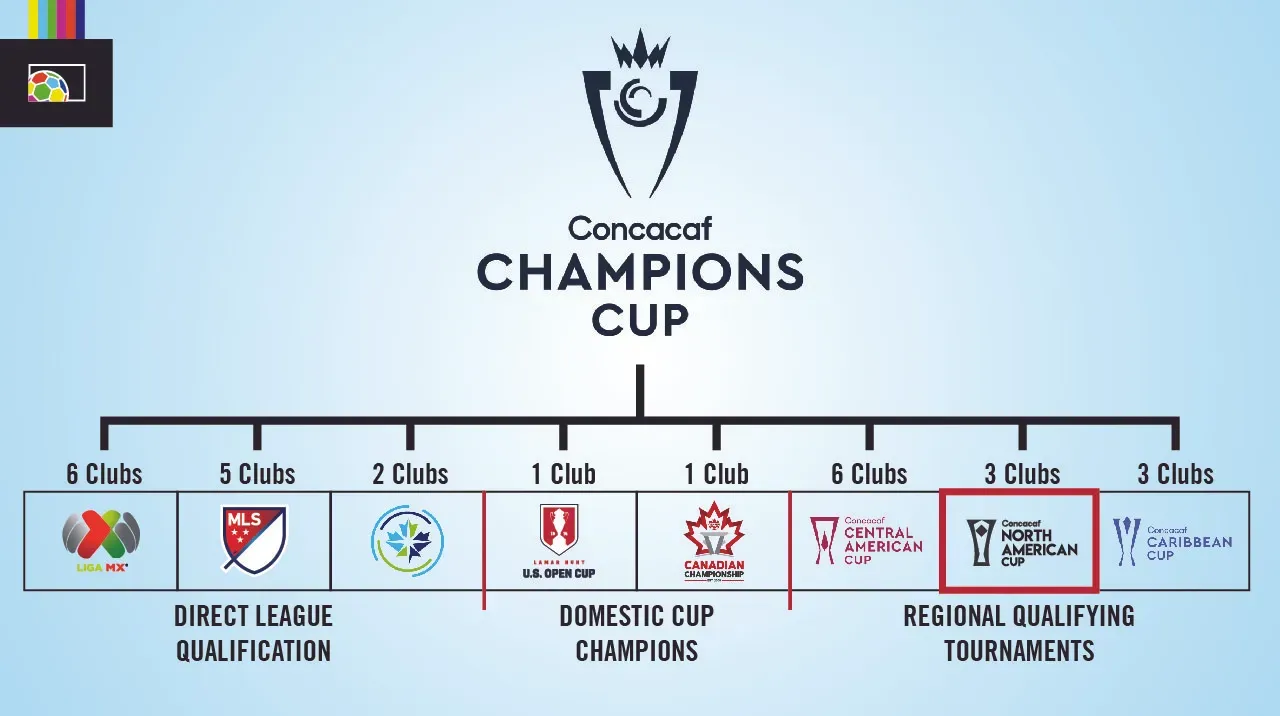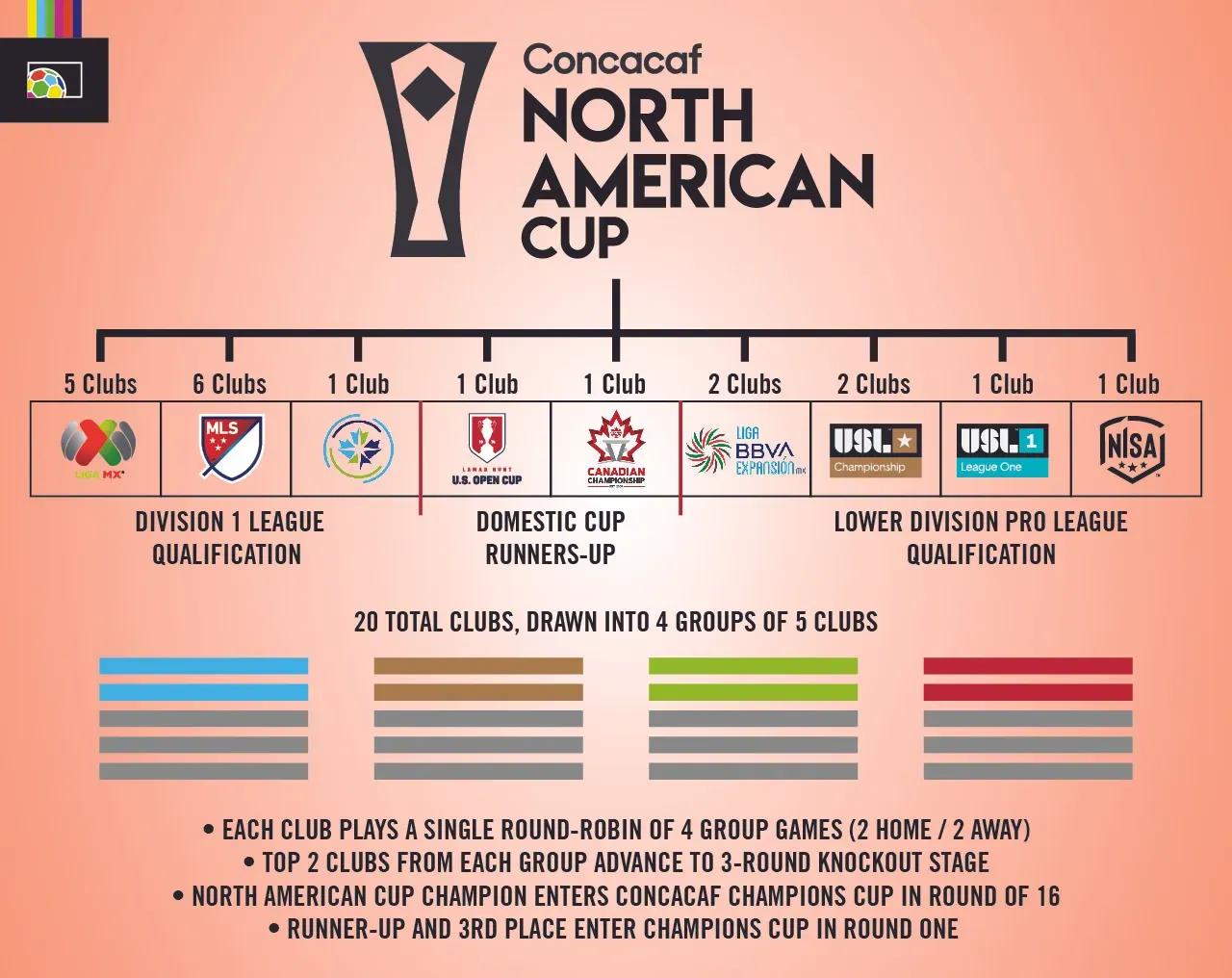The 2023 Leagues Cup was a new era for the competition. No longer simply a series of glorified friendlies, it is now a full-fledged piece of the CONCACAF club puzzle, offering spots in the newly re-christened Champions Cup for 2024.
But despite some fun moments (and the perfectly-timed arrival of arguably the world’s biggest star), the tournament is frankly a farce from the standpoint of competitive integrity. If one really examines things, the Leagues Cup has no business feeding into CONCACAF Champions Cup.
Examining the new CONCACAF landscape
Alongside the expansion of Leagues Cup in 2024, CONCACAF made sweeping changes to the way Champions League will work moving forward. This included changing the name of the competition back to the old Champions Cup moniker. This name does more accurately describe the competition, which is a straight knockout tournament with no group stage.

The competition will include 27 teams, with Liga MX and MLS providing six and five clubs respectively. The Canadian Premier League, Canada’s official first division, will send two clubs. The U.S. Open Cup and Canadian Championship champions each qualify as well. The remaining twelve teams will qualify via new regional cup competitions.
Three from the Caribbean Cup, six from the Central American Cup, and three more from Leagues Cup. These tournaments have replaced the short-lived, second-tier CONCACAF League, and each represents one sub-zone of CONCACAF. And this is where Leagues Cup is woefully out of place.
A competitive imbalance
First, lets take a look at how the Caribbean Cup and Central American Cup work.
The number of teams in each tournament varies, but the general format is the same.
Teams qualify to these two tournaments through domestic league results. For the Caribbean Cup, there is an extra layer, as two spots come from the especially tiny nations through the Caribbean Shield competition.
The qualified clubs (10 for the Caribbean, 20 for Central America) are split into five-team groups. Group play is a single round-robin of four games, with two at home and two on the road. The top two clubs from each group enter a knockout stage which determines final qualification for Champions Cup.
Leagues Cup, however, does not work this way. Firstly, the competition is not organized by CONCACAF itself, but rather MLS and Liga MX.
Second, no qualification is necessary to enter Leagues Cup. Every Liga MX and MLS team gets in automatically. The sheer amount of teams involved also means that the format doesn’t mimic the other regional competitions. Only two group stage matches were played, and none of the Mexican sides had home games. The entire tournament was played in the US and Canada at MLS venues.
Garber on the Leagues Cup format
When pressed on the lack of home games for Liga MX sides, MLS boss Don Garber had this to say: “I don’t think it should compete with the Champions Cup and I think once you start having home and away it starts to look like that. I am not sure if that’s in the best interest of the two leagues and our confederation (CONCACAF).”
Of course, Leagues Cup isn’t supposed to compete with Champions Cup. It feeds into it. It is, by the nature of the tournament acting as a qualifier for CCC, a lower tier competition. But that’s not an excuse for it to not provide a level playing field – home games and travel requirements – for every participant. If anything, the competition being officially sanctioned by CONCACAF demands that a fair set of standards be in place.
The home-field advantage proved very helpful in the debut of the new format. All three Champions Cup spots – 1st, 2nd, and 3rd place – went to MLS sides in 2023.
In addition, due to the current lack of promotion and relegation throughout the entire North American zone, not every club in the region has the opportunity to qualify for Leagues Cup, as those in Central America or the Caribbean do for their regional competitions.
When you look at it, Leagues Cup is in no way equitable to the other two regional feeder competitions for Champions Cup. And by only including Liga MX and MLS clubs – including every team that will eventually secure one of the other eleven direct CCC spots shared between the two leagues – it really has no competitive justification to exist.
Crafting something better
If MLS and Liga MX want to continue on with Leagues Cup as a money-making exhibition tour in the USA and Canada, by all means, go for it. Let’s be honest – that’s the real reason it was created in the first place.
But CONCACAF needs to drop it’s endorsement of Leagues Cup, and create a replacement feeder competition for the North American zone that is more inclusive and mirrors the set up for Central America and the Caribbean.
Keeping with form, let’s call it the “CONCACAF North American Cup”. We’ll slot it into the place Leagues Cup currently occupies:

Since the North American zone already has fifteen direct qualification spots, we’ll give the North American Cup the same three Champions Cup slots that Leagues Cup currently hands out.
The competition should emulate the format of the other two regional sub-tournaments, with clubs qualifying through domestic competitions. Split into four-team groups, each team would play a single round-robin, with two home and two (real) away games. The top two teams from each group make the knockout round. The two finalists and the third place team make the Champions Cup.
As far as how to divvy-up those spots, here’s what could be a reasonable breakdown:
Presenting the CONCACAF North American Cup

The tournament could act like a true “Europa League” style competition for Liga MX, MLS, and CanPL clubs. Instead of all (and only) MLS/Liga MX teams automatically getting in, they would have to qualify via league results. The hypothetical North American Cup would take the next-best teams overall from the three D1 leagues that did not directly qualify for Champions Cup each year.
Due to the massive geographic scale of the three countries, and the aforementioned lack of pro/rel, this point is where qualification can (and should) differ from other continental competitions around the world.
First, let’s add the runners-up of the U.S. Open Cup and Canadian Championship. If Mexico ever brings back Copa MX, the number of their Liga MX spots can be tweaked to accommodate, in both this tournament and the Champions Cup proper.
Our Pick:Includes: Every regular season game, MLS Cup Playoffs, Leagues Cup, & More |
 |
Two spots each can be given to Liga de Expansión MX and USL Championship. To round out the field, one spot each for the USL League One and NISA winners.
Including division two and three clubs is, again, unusual. But due to the way soccer in North America currently operates, this actually promotes a stronger overall field of clubs in continental play. The USL Championship and Expansión MX are arguably the third- and fourth-strongest leagues top-to-bottom in all of CONCACAF. But since they are locked into the lower tiers, these clubs effectively have no current way to enter CONCACAF competitions. A very slim avenue via the Open Cup exists for American teams, but frankly that’s not adequate.
League-based access to continental tournaments exists almost everywhere on Earth for most clubs. Giving a few direct spots to our lower tiers for a secondary regional cup is the least we could do as an alternative to implementing pro/rel as a path to CONCACAF play.
Don’t count on it, though
We all know that money rules the modern game. And the tail most especially wags the dog in North America, with MLS and Liga MX officials shaping much of the landscape of soccer in the region.
It’s doubtful the two leagues would willingly give up the place Leagues Cup has carved out for itself in the CONCACAF setup. And it’s even more unlikely that the confederation would have the backbone to stand up to it’s two biggest leagues.
But even with our imperfect North American pyramid, a better, simpler, and more inclusive solution is possible.
Photo: Imago














